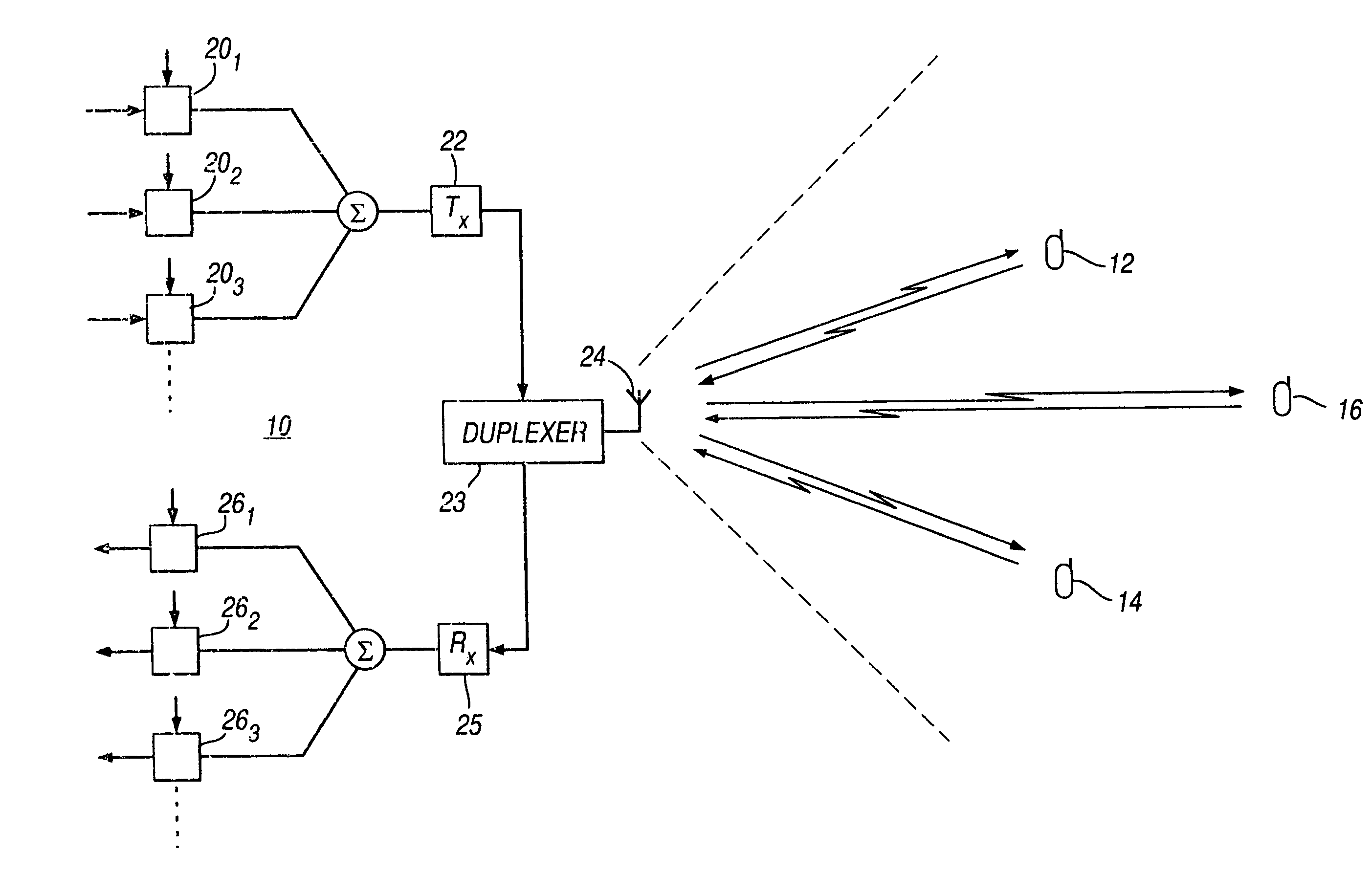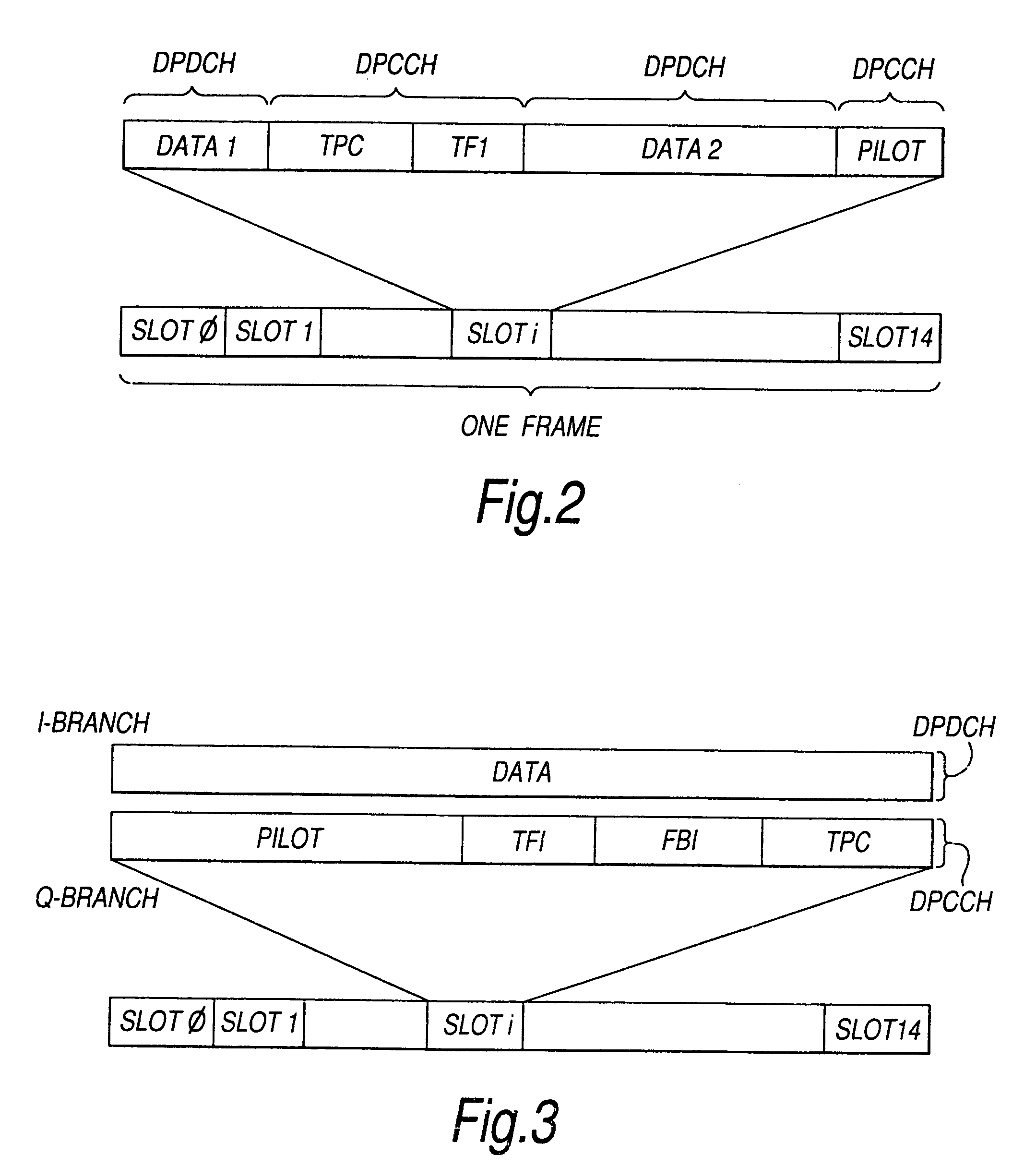Adaptive beam forming using a feedback signal
a technology of feedback signal and beam forming, which is applied in direction finders using radio waves, instruments, polarisation/directional diversity, etc., can solve the problems of reducing system efficiency, increasing the number of users, and unacceptable mui levels, so as to reduce multiuser interference, simple feedback information, and increase the number of users in the system
- Summary
- Abstract
- Description
- Claims
- Application Information
AI Technical Summary
Benefits of technology
Problems solved by technology
Method used
Image
Examples
first embodiment
of Communication System
[0110]A mobile communication system according to a first embodiment of the present invention is shown in FIG. 6. In FIG. 6, base station 10 and mobile unit 12 cooperate to control the direction of a transmission beam 20 which is transmitted from the base station to the mobile unit. Base station 10 comprises beam former unit 30, transmitters 321, 322, 323, antenna elements 341, 342, 343, beam former control unit 36, receiving antenna 38, receiver 40 and demultiplexer 42. Mobile unit 12 comprises antenna 44, duplexer 46, receiver 48, beam separator 50, beam quality indicators (BQIs) 52, 54, 56, comparator 58, multiplexer 60 and transmitter 62.
[0111]In operation, beam former unit 30 receives a signal for transmission to mobile unit 12 and modifies the signal in accordance with a control signal from beam former control unit 36 to produce antenna signals. The operation of the beam former unit 30 is described later in detail with reference to FIG. 7. The antenna sig...
second embodiment
of Communication System
[0140]A mobile communications system according to a second embodiment will now be described with reference to FIG. 10. The second embodiment is designed to employ both transmit diversity and adaptive antenna techniques. In one kind of transmit diversity technique (referred to as antenna diversity), two or more different transmission antennas or antenna arrays are provided, and the best antenna (or antenna array) for data transmission at any given time is selected. The different antennas (or arrays) may be spaced apart at different positions or may have different orientations. In this way, if the transmission path from one of the transmitters is blocked or undergoing adverse conditions such as deep fade, the other transmitter may be used for transmission. If information about the relative quality of the signals from the two transmitters is available, instead of simply selecting one of the antennas, the system can be improved by using maximum ratio combining at ...
PUM
 Login to View More
Login to View More Abstract
Description
Claims
Application Information
 Login to View More
Login to View More - R&D
- Intellectual Property
- Life Sciences
- Materials
- Tech Scout
- Unparalleled Data Quality
- Higher Quality Content
- 60% Fewer Hallucinations
Browse by: Latest US Patents, China's latest patents, Technical Efficacy Thesaurus, Application Domain, Technology Topic, Popular Technical Reports.
© 2025 PatSnap. All rights reserved.Legal|Privacy policy|Modern Slavery Act Transparency Statement|Sitemap|About US| Contact US: help@patsnap.com



